
The Bottom Line
Introduction, Specifications, and Pricing
While we have looked at a few X470 ATX motherboards, we haven't taken a look at any smaller motherboards for the X470 platform. Today we will take a close look at the X470GTN, a mini-ITX motherboard designed for the high-end X470 platform. While we did take a look at the X370GTN a while back, today we look at its replacement, the X470GTN. Let's see what Biostar has for us!
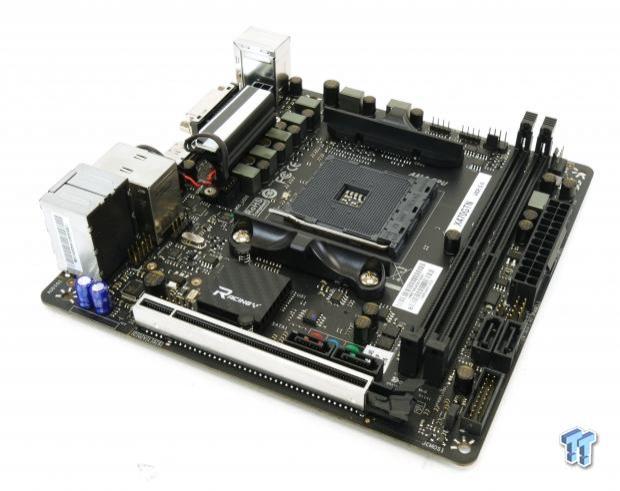
Specifications

The X470GTN Gaming features 32Gb/s M.2,USB 3.1, USB 3.0, Realtek LAN, and four SATA6Gb/s ports.
Pricing
The X470GTN Gaming costs $126.35.
Packaging and X470GTN Gaming Overview
Packaging and Overview
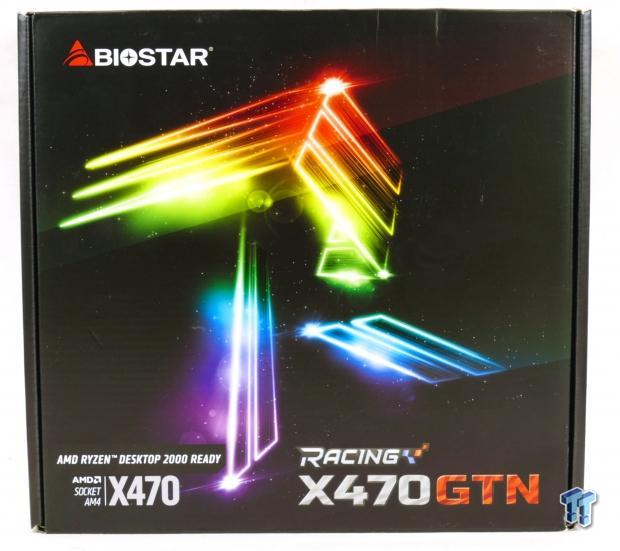
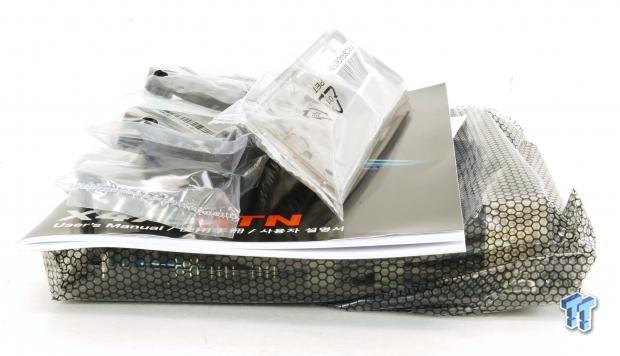
The motherboard box and packaging are quite solid and get the job done.
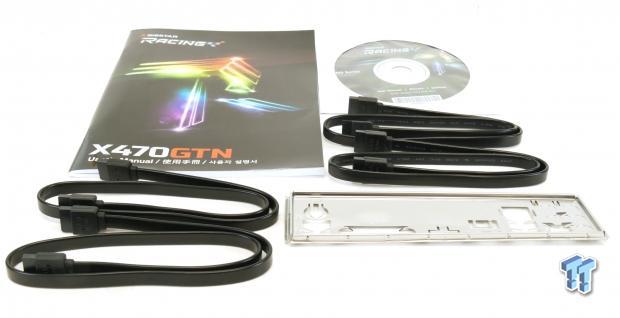
The accessory package includes four SATA6Gb/s cables, IO shield, manual, and driver DVD.
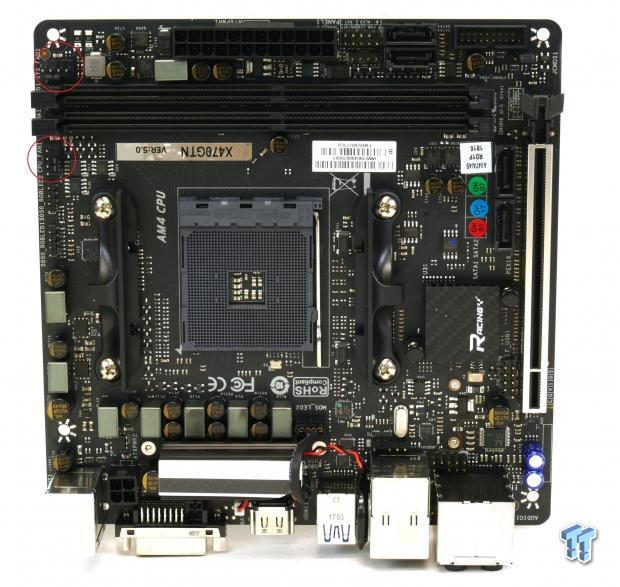
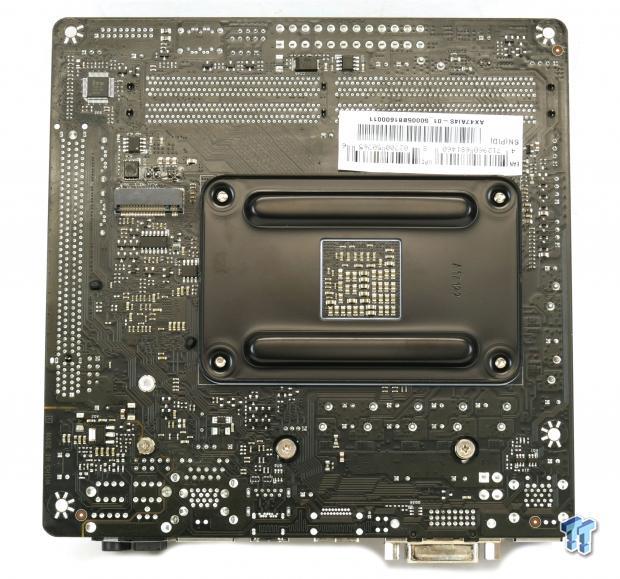
Biostar offers just two fan headers; they are circled in red and offer PWM control over 4-pin fans. PWM fans can be controlled through the UEFI or Windows. Biostar's black and gray color theme has won them many fans over the past few years, including me. I am a big fan of the RGB LEDs built into the VRM heat sinks. The back of the motherboard has some ICs, but also your M.2 slot.
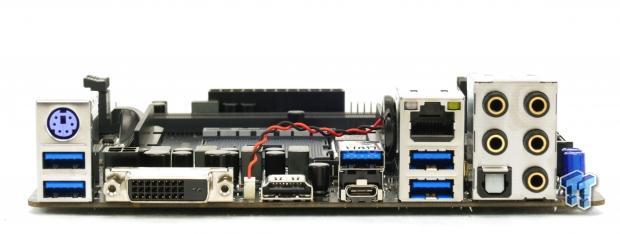
The rear IO panel features PS/2 keyboard, four USB 3.0 ports, USB 3.1 type-A, USB 3.1 type-C, DVI, HDMI, Gbit LAN, and 7.1 gold-plated audio outputs with S/PDIF out.
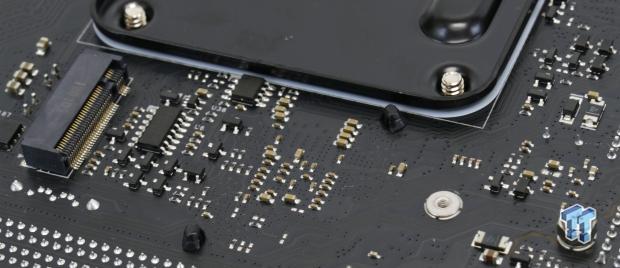
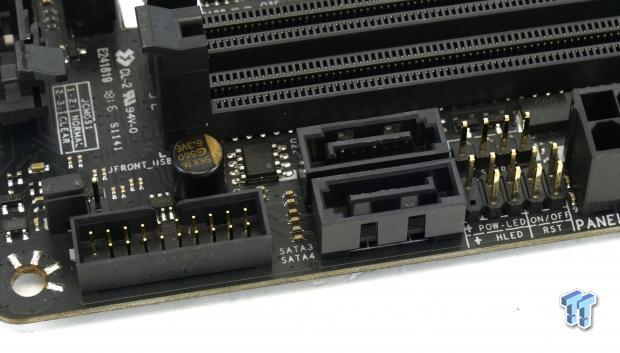
A single 32Gb/s M.2 slot sits on the rear of the PCB and allows users to use the latest NVMe drives for significantly faster performance. We also find a USB 3.0 header, two SATA6Gb/s ports, and front panel ports at the edge of the motherboard. The clear CMOS header is right behind the USB 3.0 internal header.
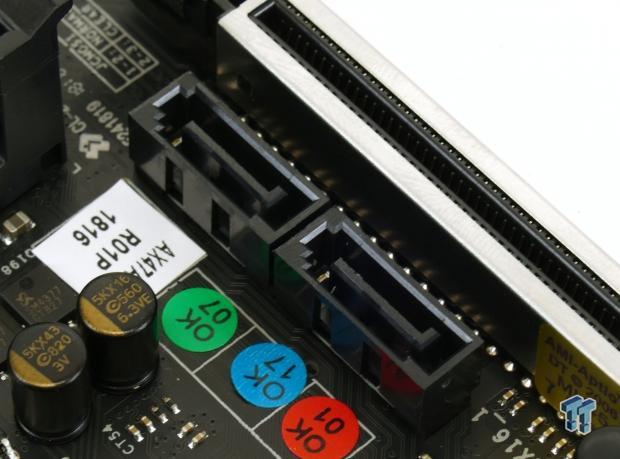
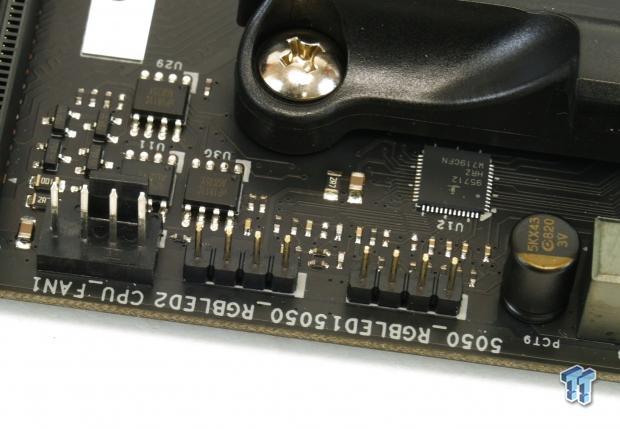
Two more SATA ports can be found above the x16 slot. Two RGB LED 5050 headers are located at the top of the motherboard above the CPU socket.
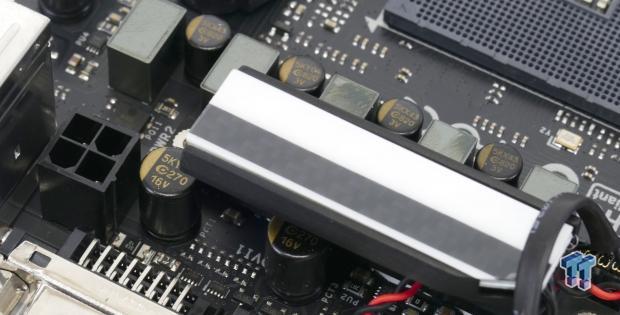
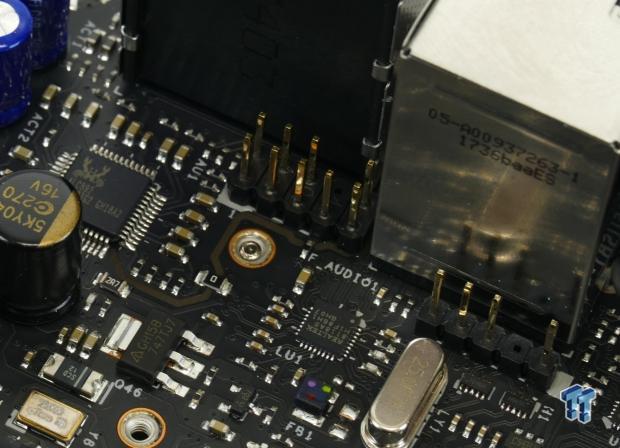
The CPU VRM uses a single 4-pin CPU power plug, and its heat sink is screwed into the motherboard. The audio header is located right behind the audio jacks. Surprisingly, the heat sinks and shields are screwed onto the motherboard.
Biostar X470GTN Gaming Circuit Analysis
Circuit Analysis
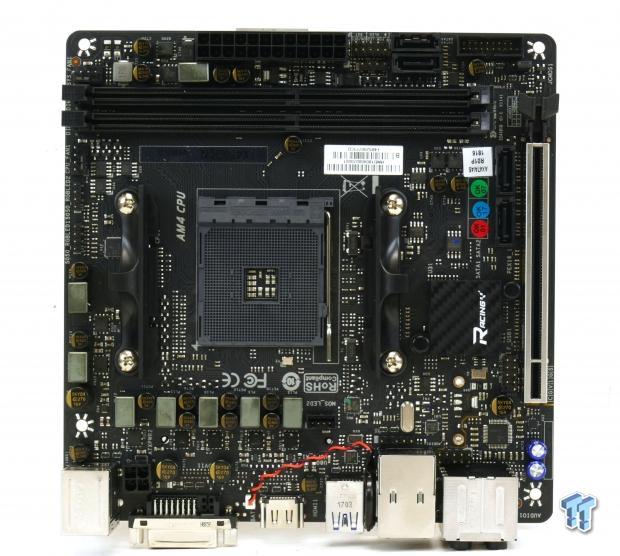
Removing the heat sinks doesn't really reveal too much, since most of the motherboard is already revealed.
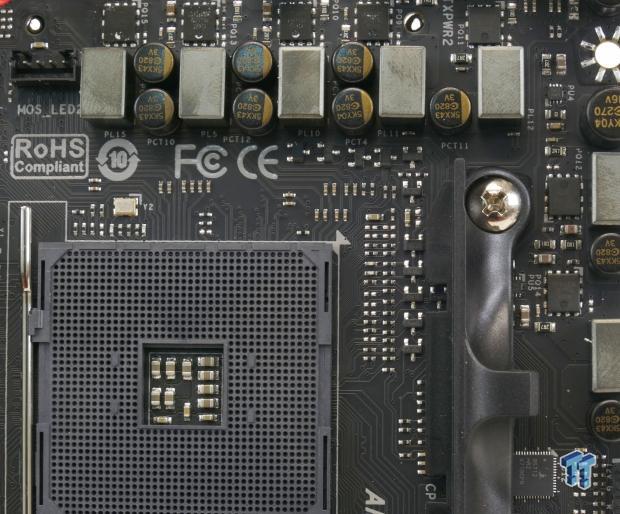
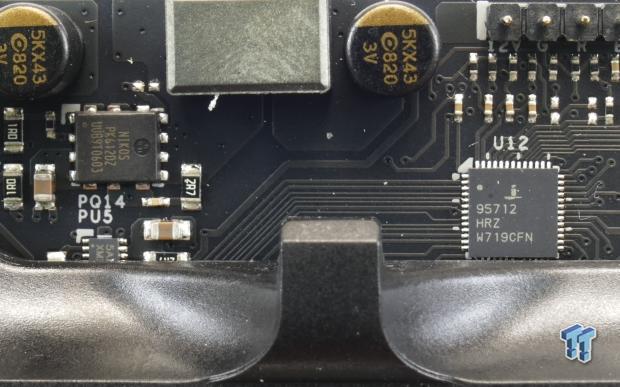
The VRM is in a 4+3 phase configuration. It's controlled by an Intersil ISL95712 PWM which offers 4+3 phase operation with integrated drivers. It offers two integrated drivers on the four-phase rail and one on the three-phase rail. To drive the rest of the phases, Biostar uses three ISL6625A drivers, which are labeled "5AZ". Each phase uses a dual N-Channel MOSFET so that you won't see discrete high-side and low-side MOSFETs; instead, you get a single package. The Nikos (UNKIC) PK612DZ are the dual N-Channel MOSFETs, they are rated for roughly 50A.
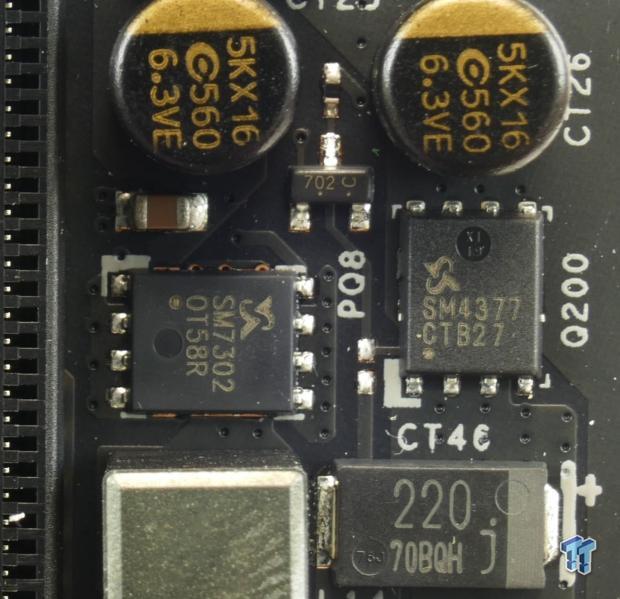
Two Sinopower N-Channel MOSFETs are controlled by a single phase Richtek PWM with an integrated driver, providing enough power for two memory DIMMs.
Biostar X470GTN Gaming Circuit Analysis Continued
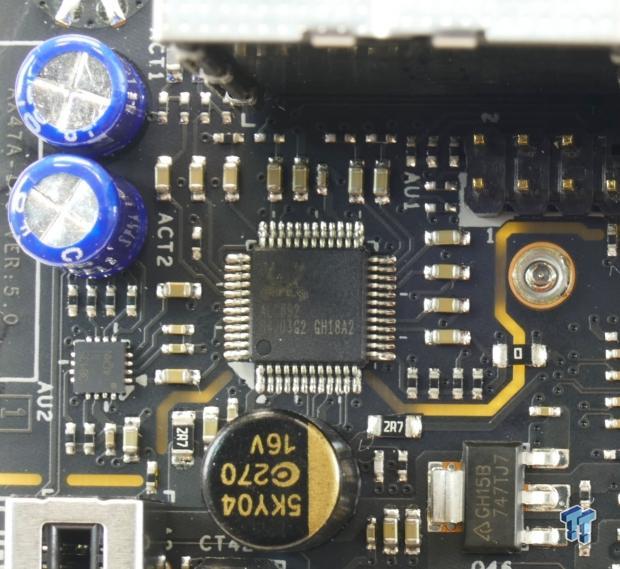
The Realtek ALC892 audio codec is used to provide HD audio to the rear IO and front panel header. A sense amplifier, some audio capacitors, and a physical divide in the PCB helps to improve audio quality.
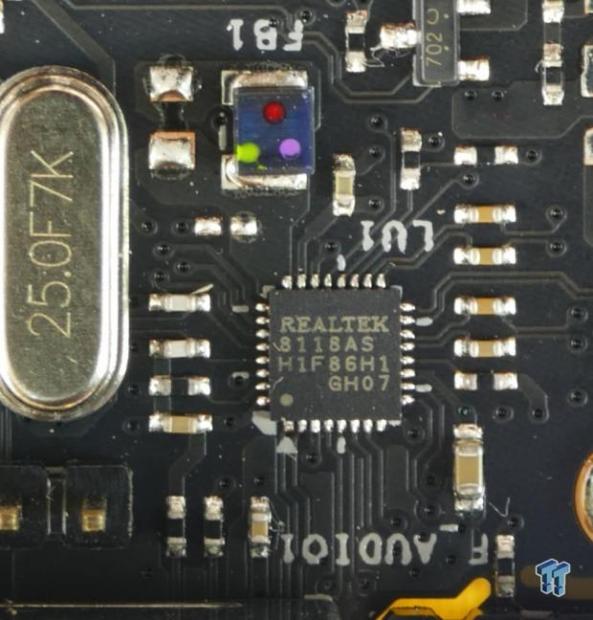
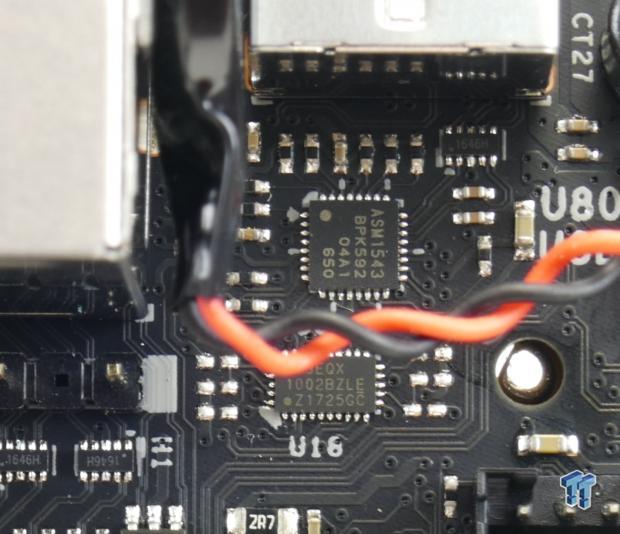
A Realtek RTL8118AS is the NIC that provides Gbit LAN on the motherboard. Biostar uses a Pericom PI3EQX USB 3.1 repeater and an ASMedia ASM1543 type-C controller to facilitate proper signaling of AMD's USB 3.1.
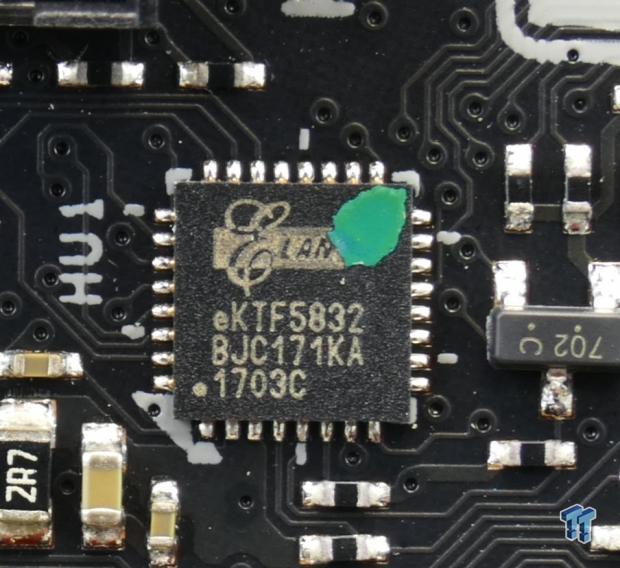
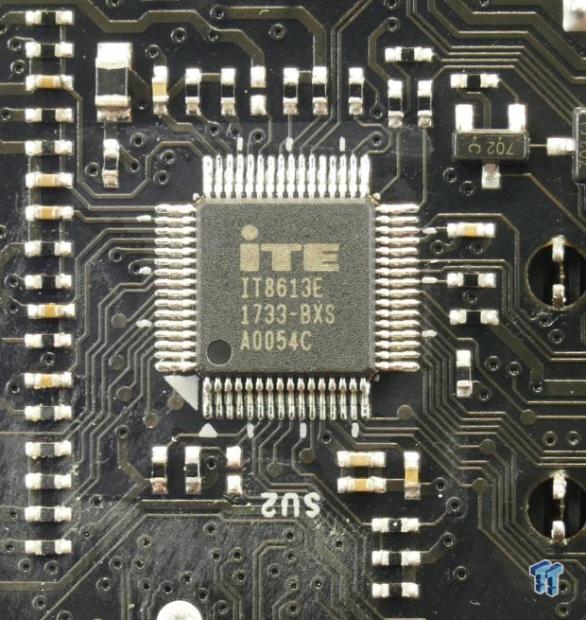
An ELAN eKTF5832 provides RGB LED control and features. The main SuperIO on the motherboard is an ITE IT8613E, and it provides PS/2, voltage monitoring, and fan control.
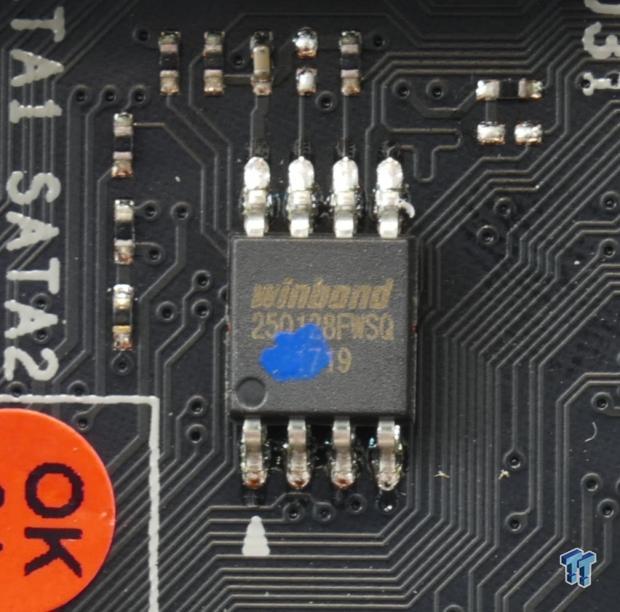
A single Winbond 128Mbit/16MB ROM holds your BIOS.
BIOS and Software
BIOS
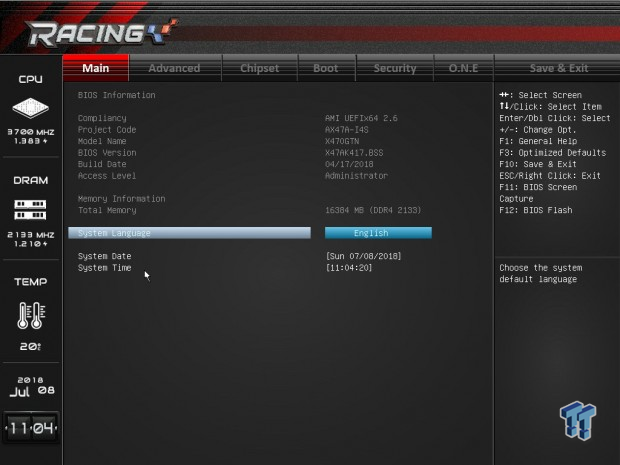
Biostar's BIOS has been changed up from a more basic UEFI to one that looks more similar to offerings from ASUS and ASRock. Overall, the usability of the UEFI is good, and all the settings are there. Fan control and RGB LED functionality are both present. Overclocking the voltages is a bit tricky as you only have offsets, which begs the question; "what are the base values?". However, we found starting slow worked okay.
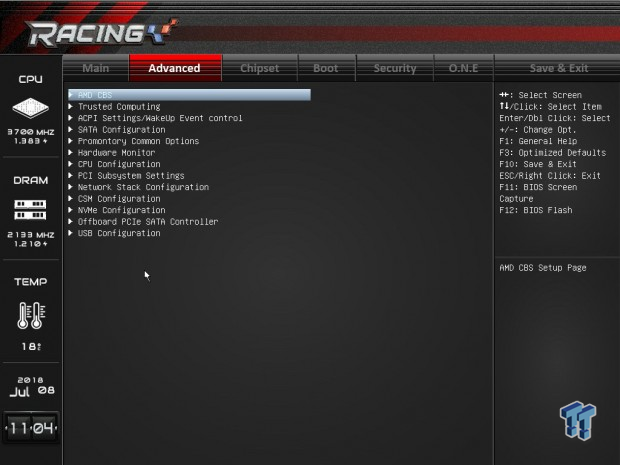
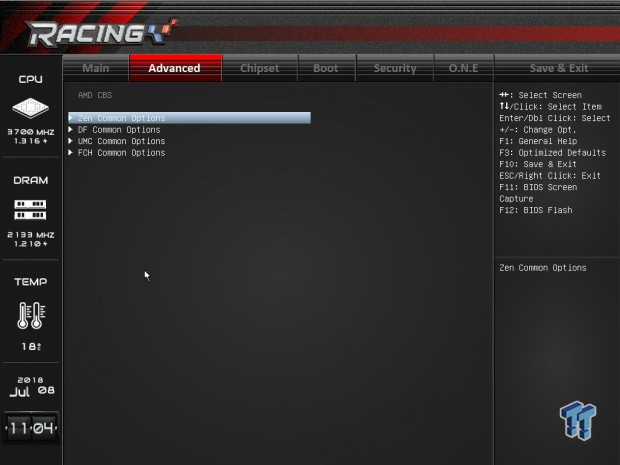

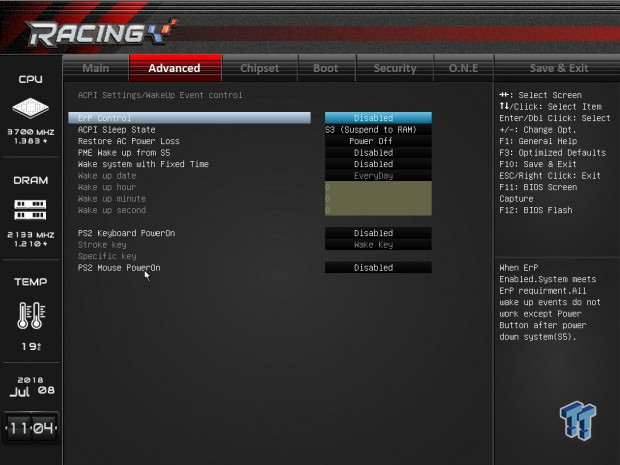

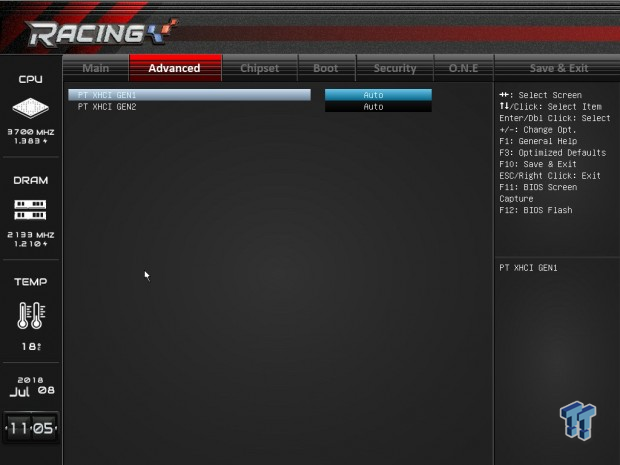
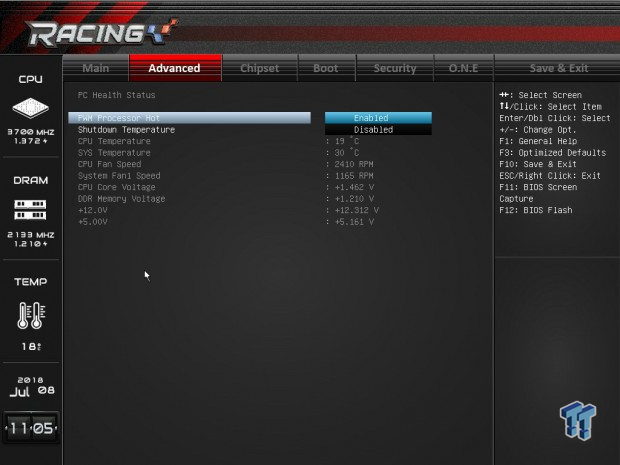
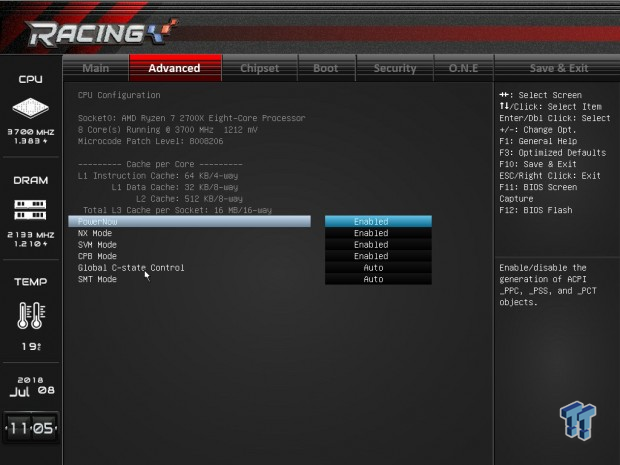
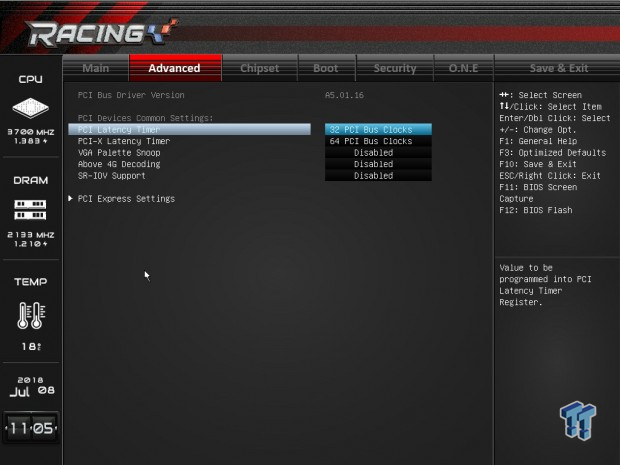
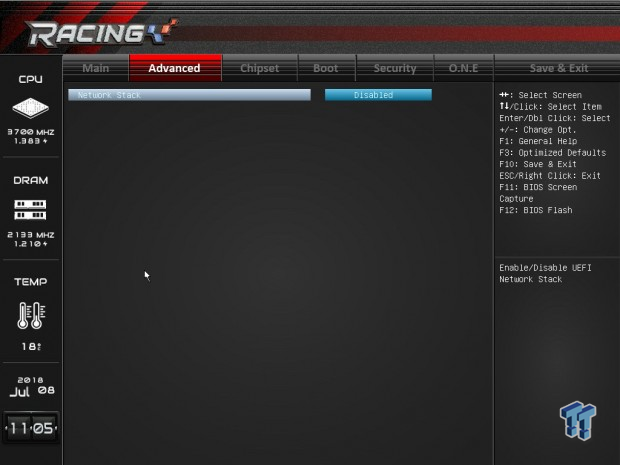
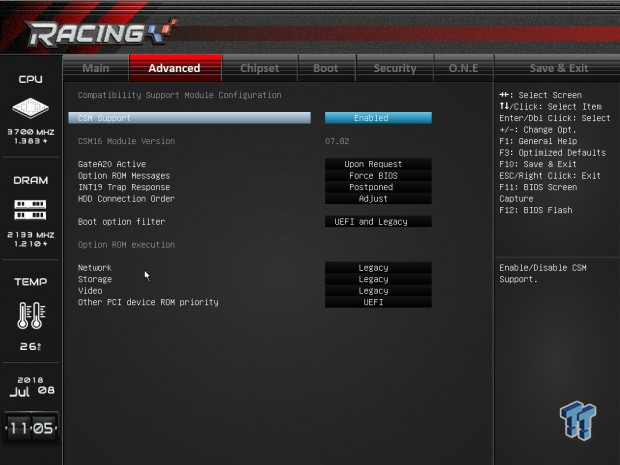
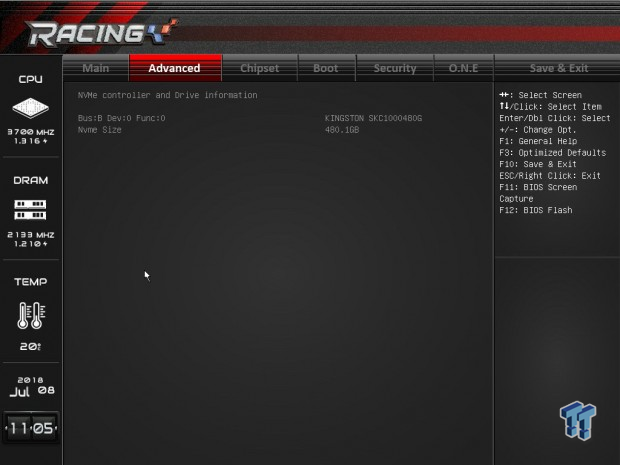
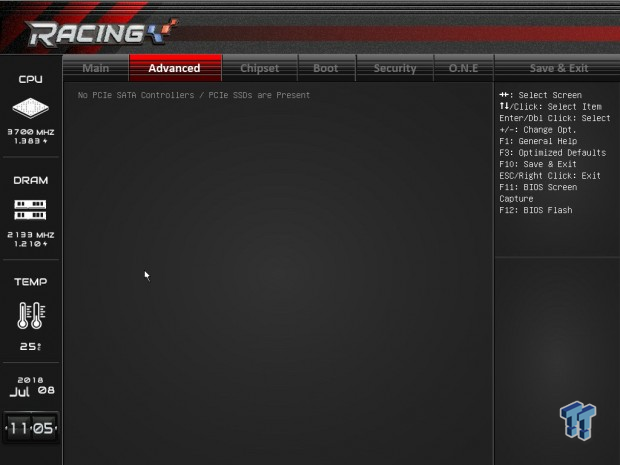
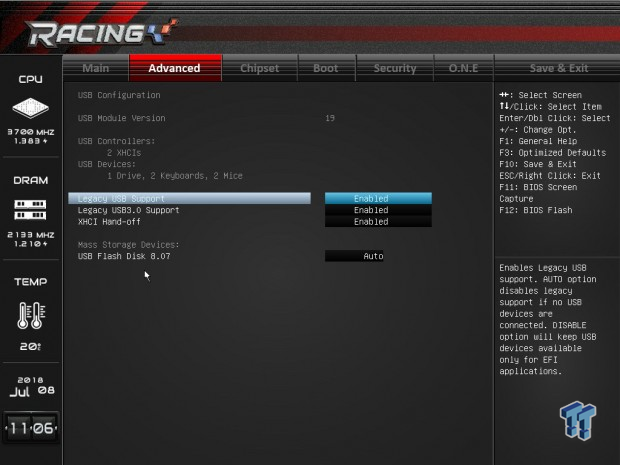
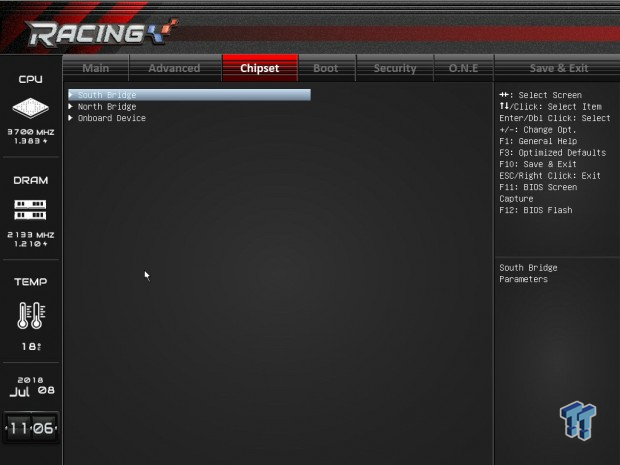
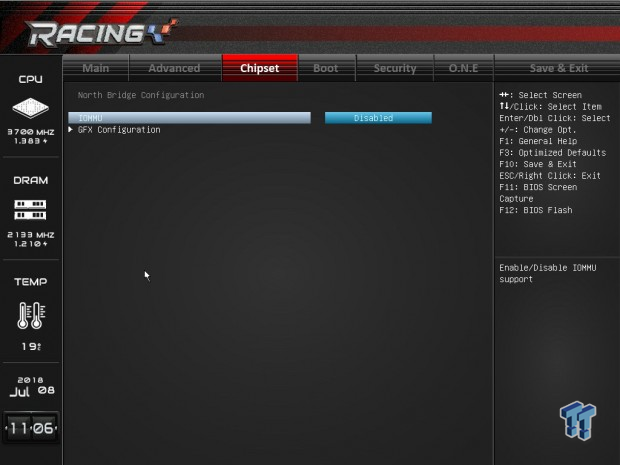
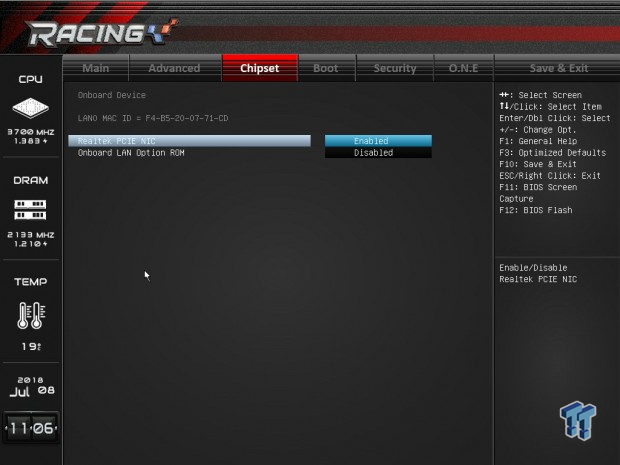
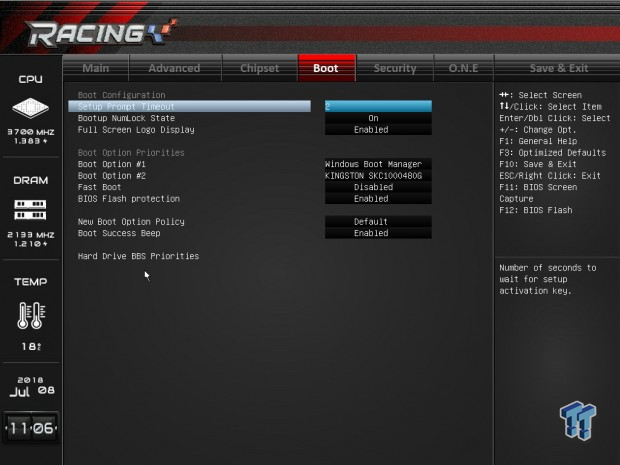

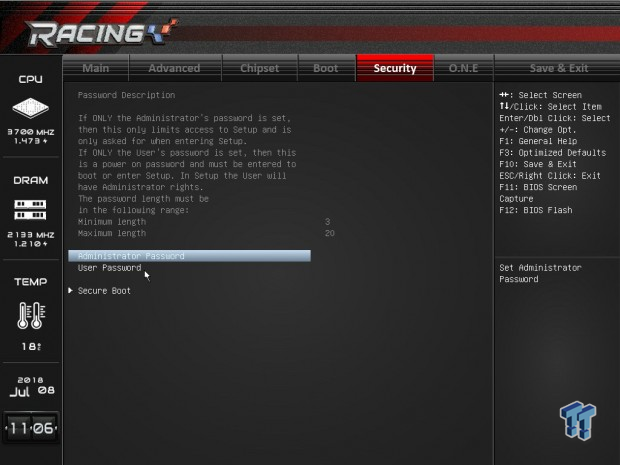
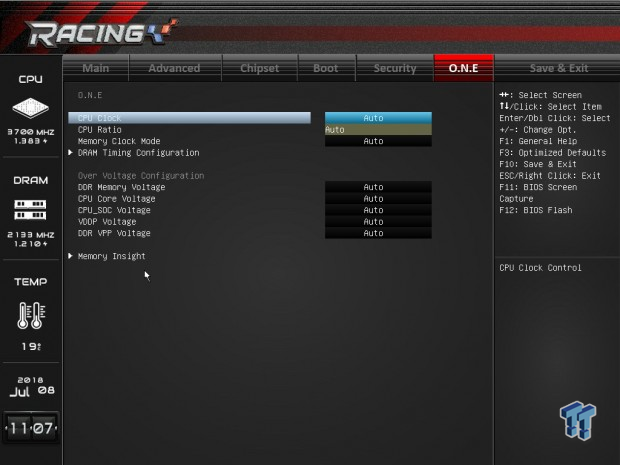
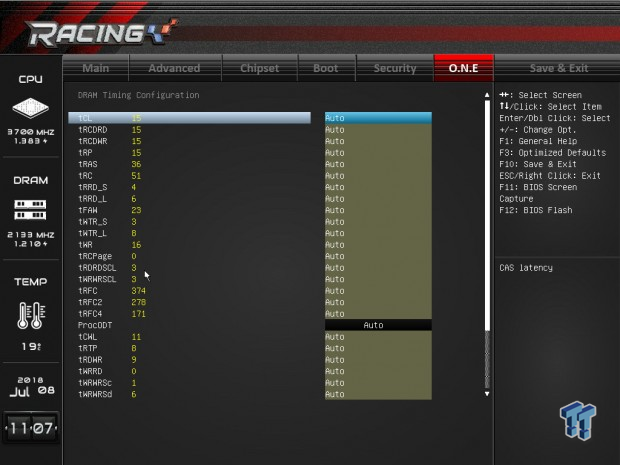
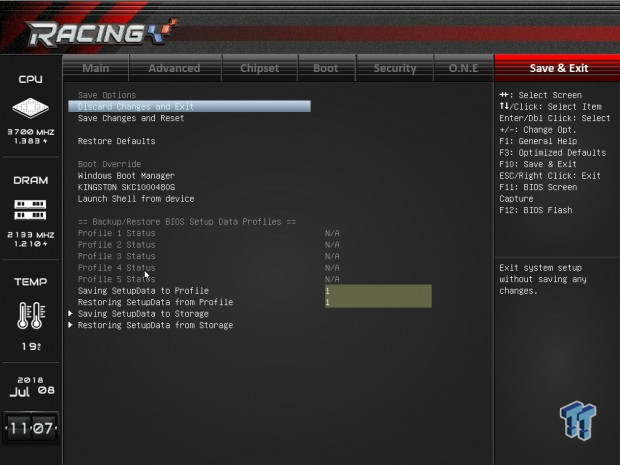
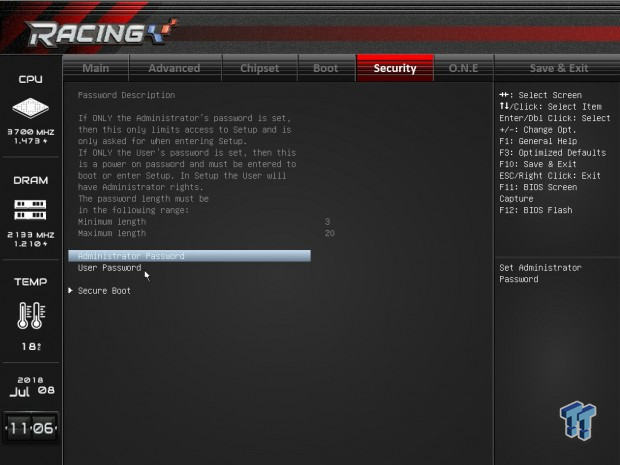
Software

Biostar's RACING program allows you to do everything from control fans to change RGB colors and overclock the CPU. We also have BIOS Update and eHot-Line.
Test System Setup
Steven's Motherboard Test System Specifications
- Motherboard: Biostar X470GTN Gaming
- CPU: AMD Ryzen 7 1800X
- Cooler: Corsair H110i - Buy from Amazon
- Memory: Corsair Vengeance (2x8GB) 3000MHz
- Video Card: NVIDIA GeForce GTX 980 - Buy from Amazon / Read our review
- Storage - Boot Drive: Kingston Predator 240GB
- Storage - SATA6G Drive: Micron Generic 240GB / Read our review
- Storage - USB Drive: Corsair Voyager GS 64GB - Buy from Amazon / Read our review
- Case: Corsair Obsidian 900D - Buy from Amazon / Read our review
- Power Supply: Corsair HX1000 - Buy from Amazon / Read our review
- OS: Microsoft Windows 10 - Buy from Amazon
- Monitor: ASUS PA328 ProArt 32" 4K - Buy from Amazon
- Keyboard: Corsair K70 LUX - Buy from Amazon
- Mouse: Corsair M65 PRO RGB - Buy from Amazon / Read our review
- Headset: Corsair VOID RGB Wireless - Buy from Amazon / Read our review
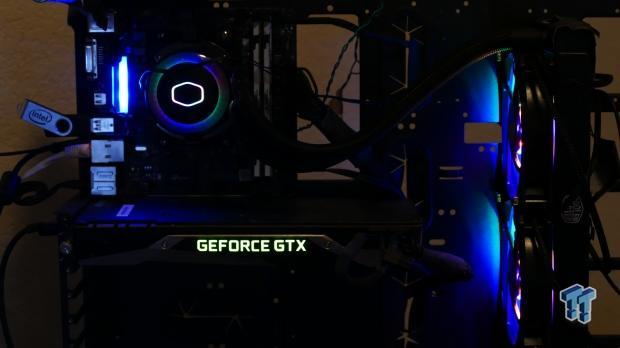
The X470GTN has the same built-in LEDs in the VRM heat sink that I am a huge fan of. It's a really nice touch that I still haven't seen any vendor integrated LEDs into heat sinks to allow users to customize heat sink color do it better.
Overclocking
Overclocking Results
CPU Overclocking
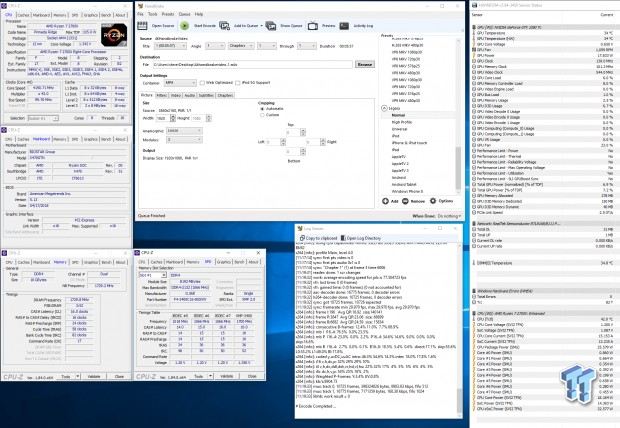
The X470GTN Gaming was able to take our CPU to 4.2GHz with ease and overclock our memory to 3466MHz with ease, it was super surprised at how easy it was to achieve, and I was even more surprised with the fact that the VRM didn't throttle the overclock. I set a VCore offset of +0.165, and that resulted in a VCore between 1.35 and 1.38v.
CPU, Memory, and System Benchmarks
CINEBENCH R15
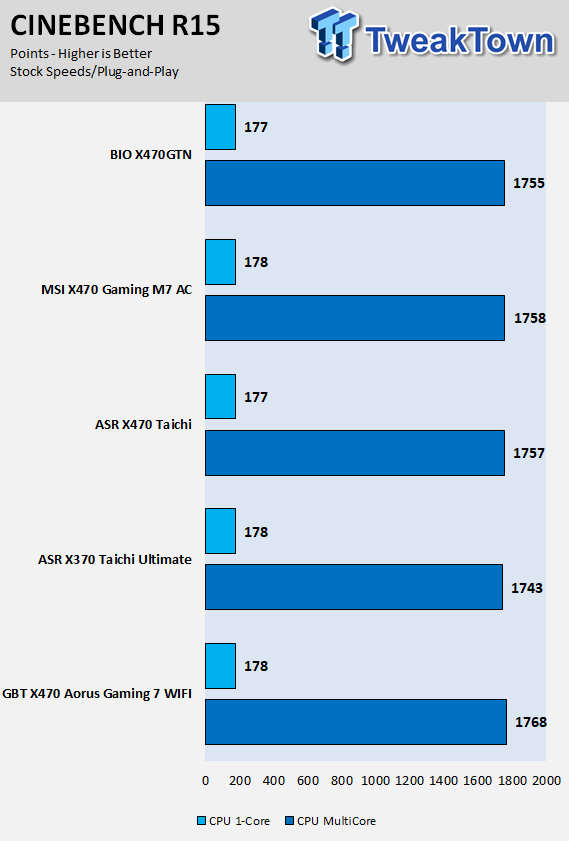
wPrime
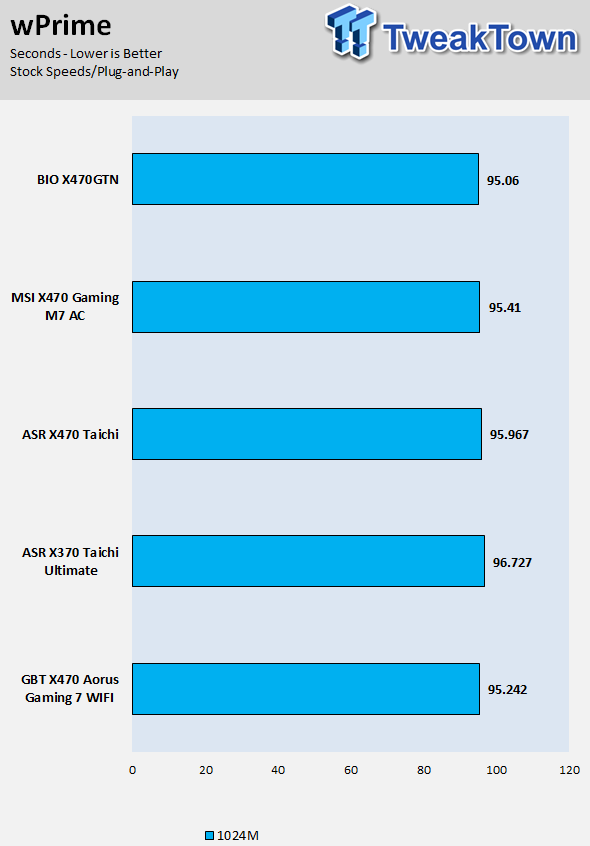
AIDA64 FPU
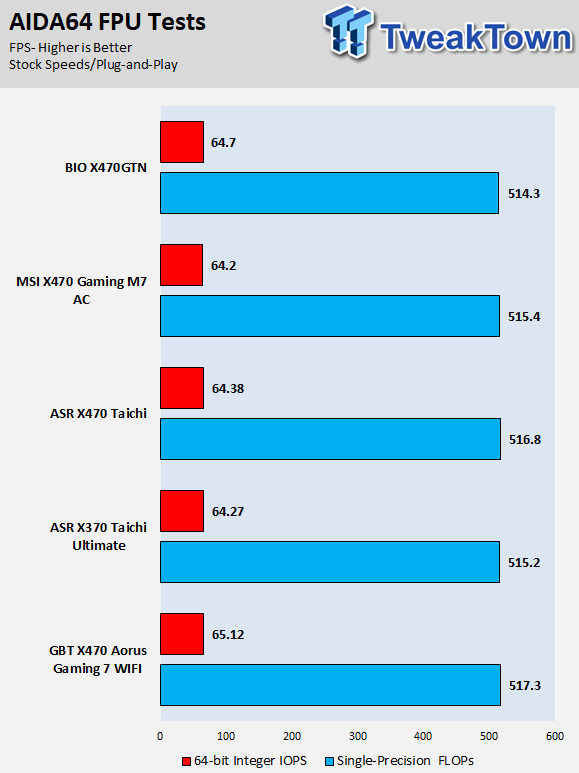
AIDA64 Memory

ScienceMark

HandBrake

3DMark: Fire Strike
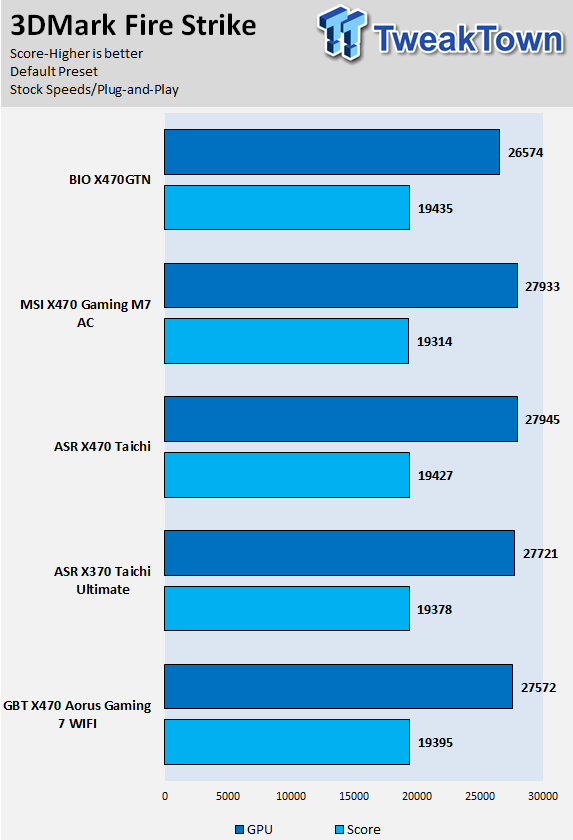
3DMark: Cloud Gate
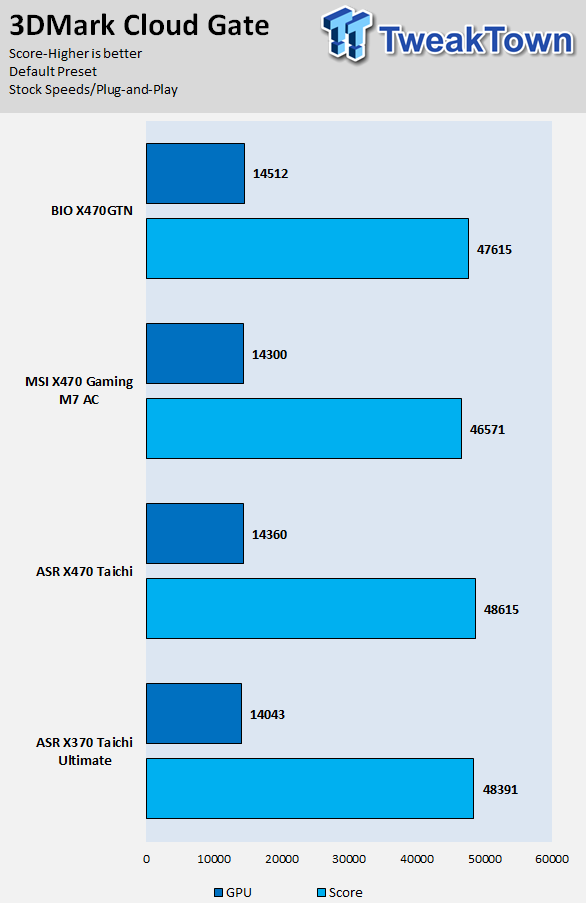
ResidentEvil 6
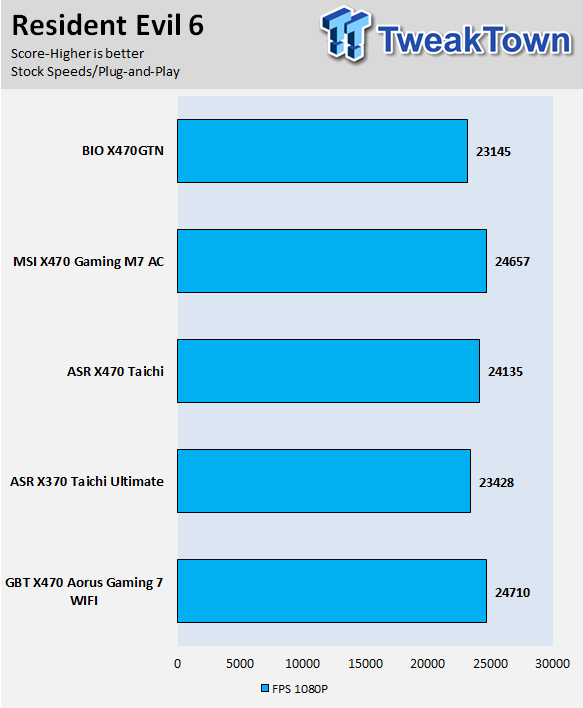
The X470GTN Gaming's performance is in line with the other X470 motherboards in the charts. With the changes coming in with every new AEGIS update to AMD's base UEFI code we see more and more improvements, so motherboard performance does vary a fair amount at this time.
System IO Benchmarks
CrystalDiskMark SATA6G:
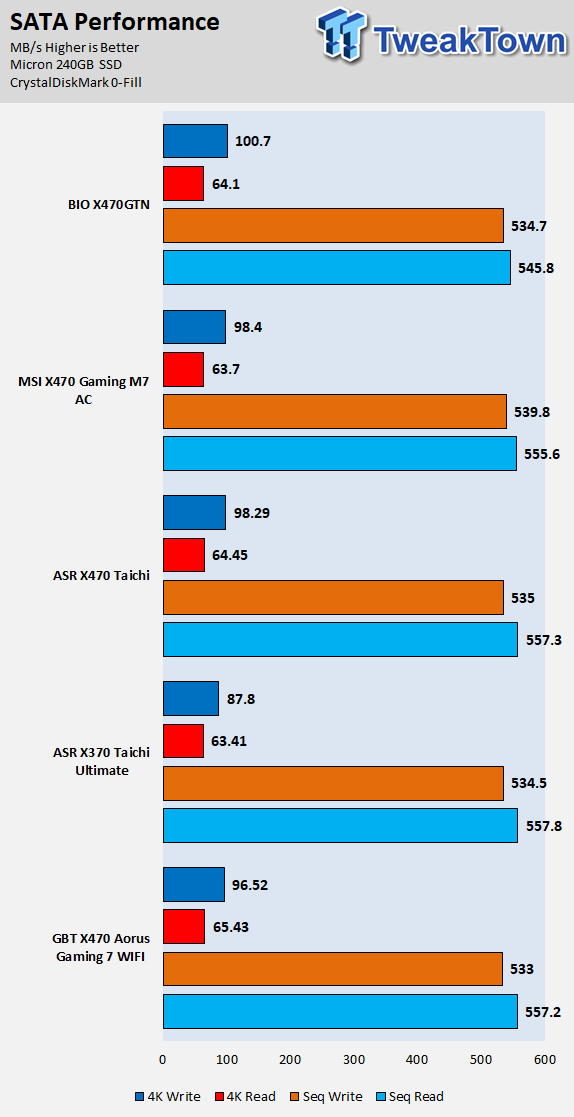
CrystalDiskMark M.2:

ixChariot Network Throughput:
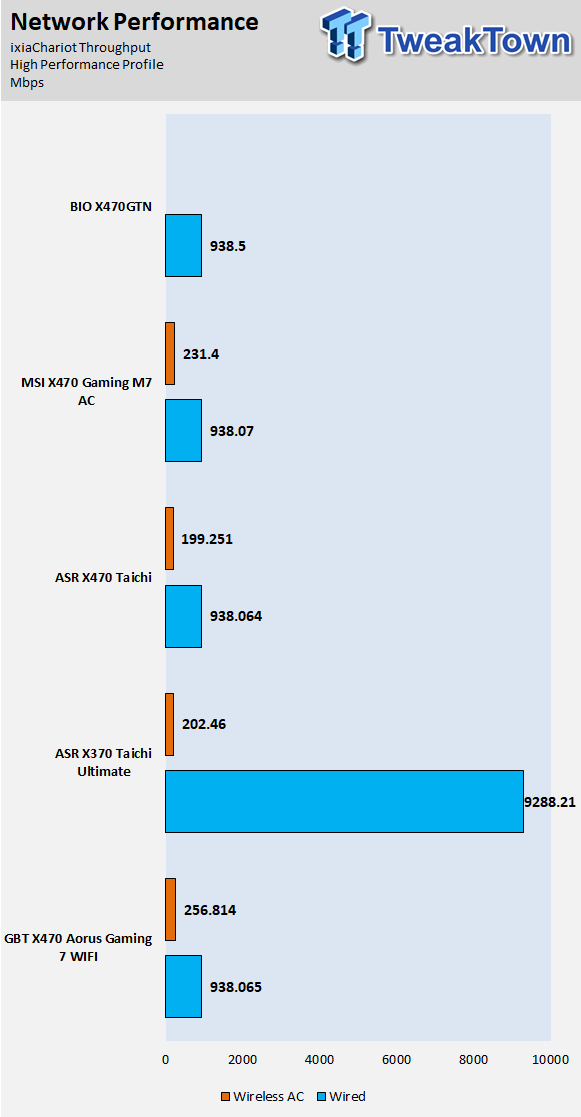
The X470GTN Gaming's performance is solid all around.
Audio RMAA 5.5:
I disable all audio features, set the correct bitrates, and then test the audio with a loopback test.
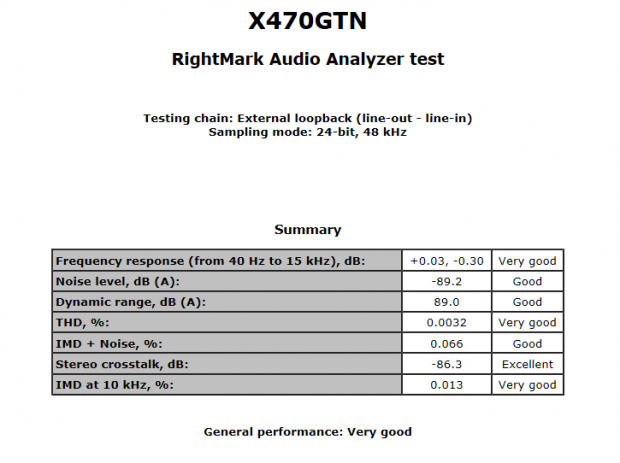
Sound Judgment by Ear: Very Good. Biostar's audio solution is average, it's not the best, but it's also not bad. There are five ratings for audio: 1. Problems, 2. Okay, 3. Acceptable, 4. Very good, 5. Excellent
Thermal Imaging and Power Consumption
System power is measured at the wall with an AC power meter.

Note on Thermal Images: In the temperature section, we use our Seek thermal imaging camera to capture the surface temperatures of major components on the board. I look at the VRM and then all other things that light up the screen. If there is something to worry about, then I will state it. Otherwise, I will just show the hotter running parts of the board for fun. Unless some component is over 80-90C, then there isn't anything to worry about.
All systems will act differently, so I will look for commonalities, such as how far from the VRM the heat spreads through the PCB and the difference in temperature between the front side and backside of the PCB. Keep in mind, the majority of the heat from the VRM goes into the PCB as it is a giant soldered on copper heat sink. A larger difference in temperature between the back and front of the PCB points towards a more effective heat sink.
Thermal Testing at Stock Speeds:
The image on the left is always at idle, and the image on the right is at load. During ALL TESTS, fans above the VRM that cool the CPU cooler's (Corsair H110i) radiator are turned on to high (12v).
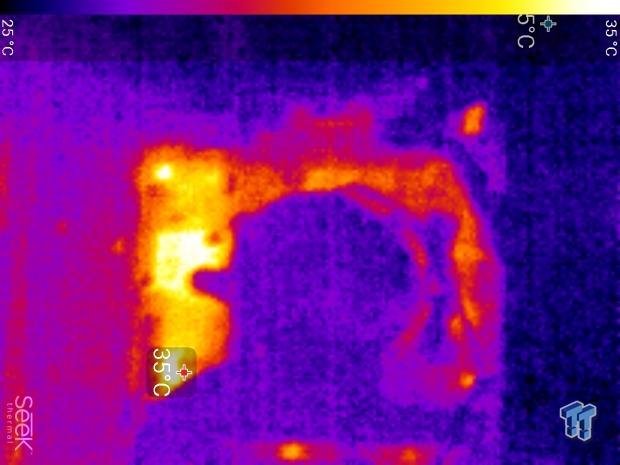
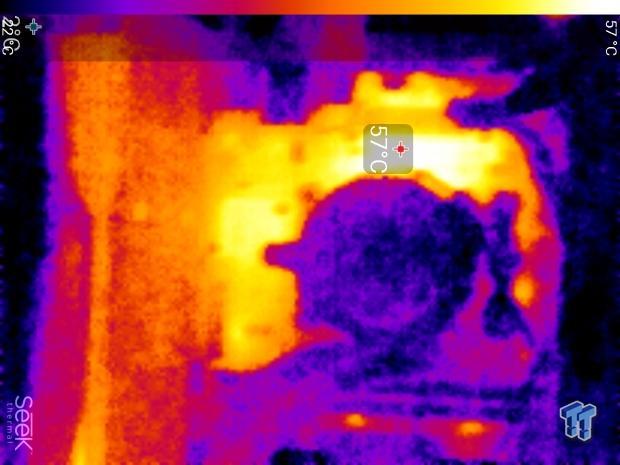
Full frontal.
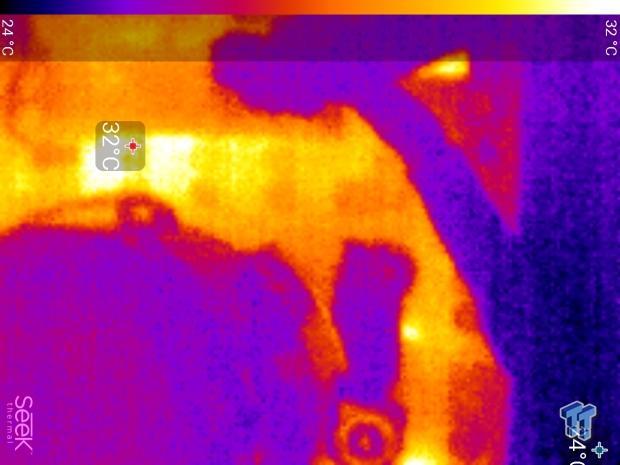
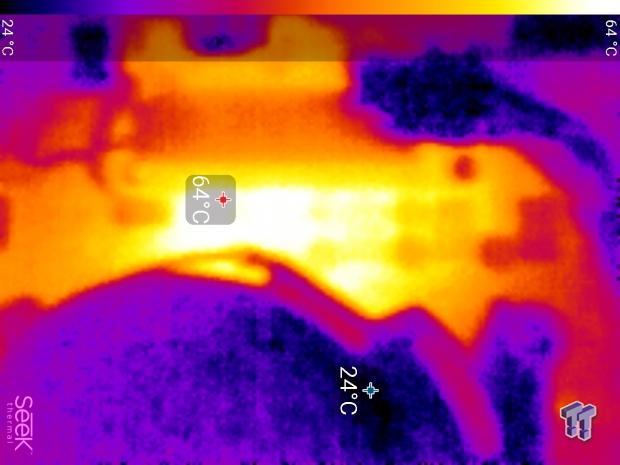
Up-close of the front of the VRM.
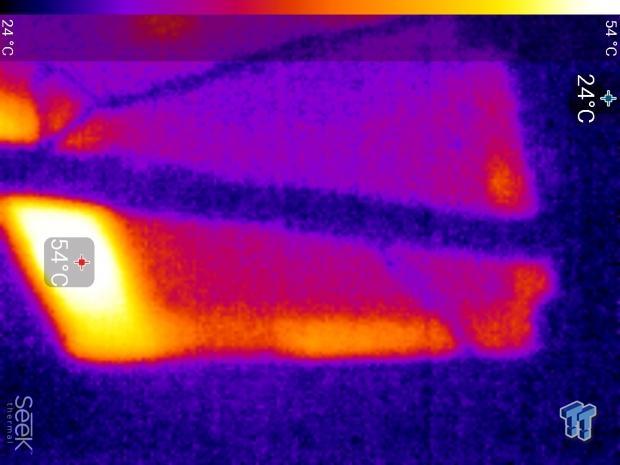
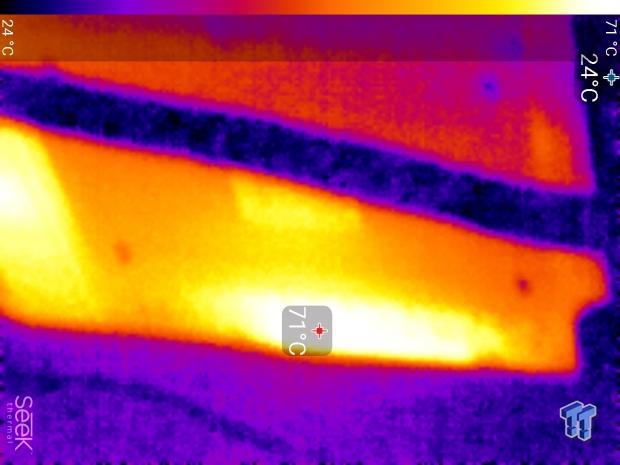
Up-close of the back of the VRM.
The X470GTN Gaming's thermal performance is average, and just like its predecessor we recommend active airflow in the VRM area if you will be doing any overclocking. Anything under 60C is great, 60-80C is acceptable, and anything above 80C is a bit worrisome (if at stock).
What's Hot, What's Not & Final Thoughts
What's Hot
Affordable: You don't find many X470 motherboards at this price point, but here we find an X470 motherboard at $120. It's mini-ITX too, which is a rarity these days. Biostar does implement a lot of chipset features as well, such as USB 3.1.
Aesthetics: Biostar includes dual RGB LED strip headers; both of them are 5050 headers. However, we really are a fan of Biostar's RGB LED panel on the VRM heat sink, as it really changes the color of the heat sink and doesn't look like cheap RGB LEDs typically do.
Designed with Vega Support: It looks like Biostar has designed this motherboard primarily for AMD's APUs with Vega graphics, as most of the rear IO panel consists of video outputs and the VRM is split 4+3 phases, so the iGPU gets enough power.
What's Not
Memory Support: The motherboard supports up to 3200Mhz and we were able to get up to 3466MHz, but we did have some issues with some other kits getting above 3200MHz.
Final Thoughts
The Biostar X470GTN is basically their X370GTN with the new X470 chipset that supports newer CPU features and improvements you wouldn't really be able to see at the surface. Most motherboard vendors refer to the X470 chipset as improving on some internal chipset issues that the X370 chipset faced, so that's one good reason to choose this motherboard over the X370GTN.
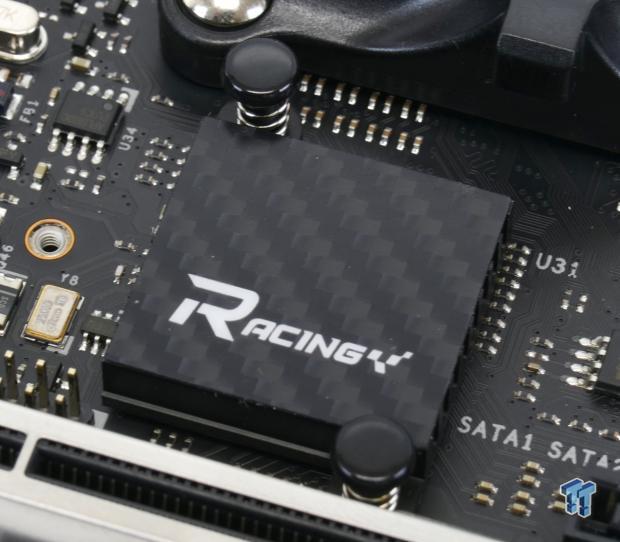
There aren't a whole lot of X470 motherboard, and while you might need to get used to the UEFI, if you know what you are doing you will really like this tiny little motherboard. If you are in the market for an X470 motherboard in the mini-ITX form factor, give the X470GTN a look.
